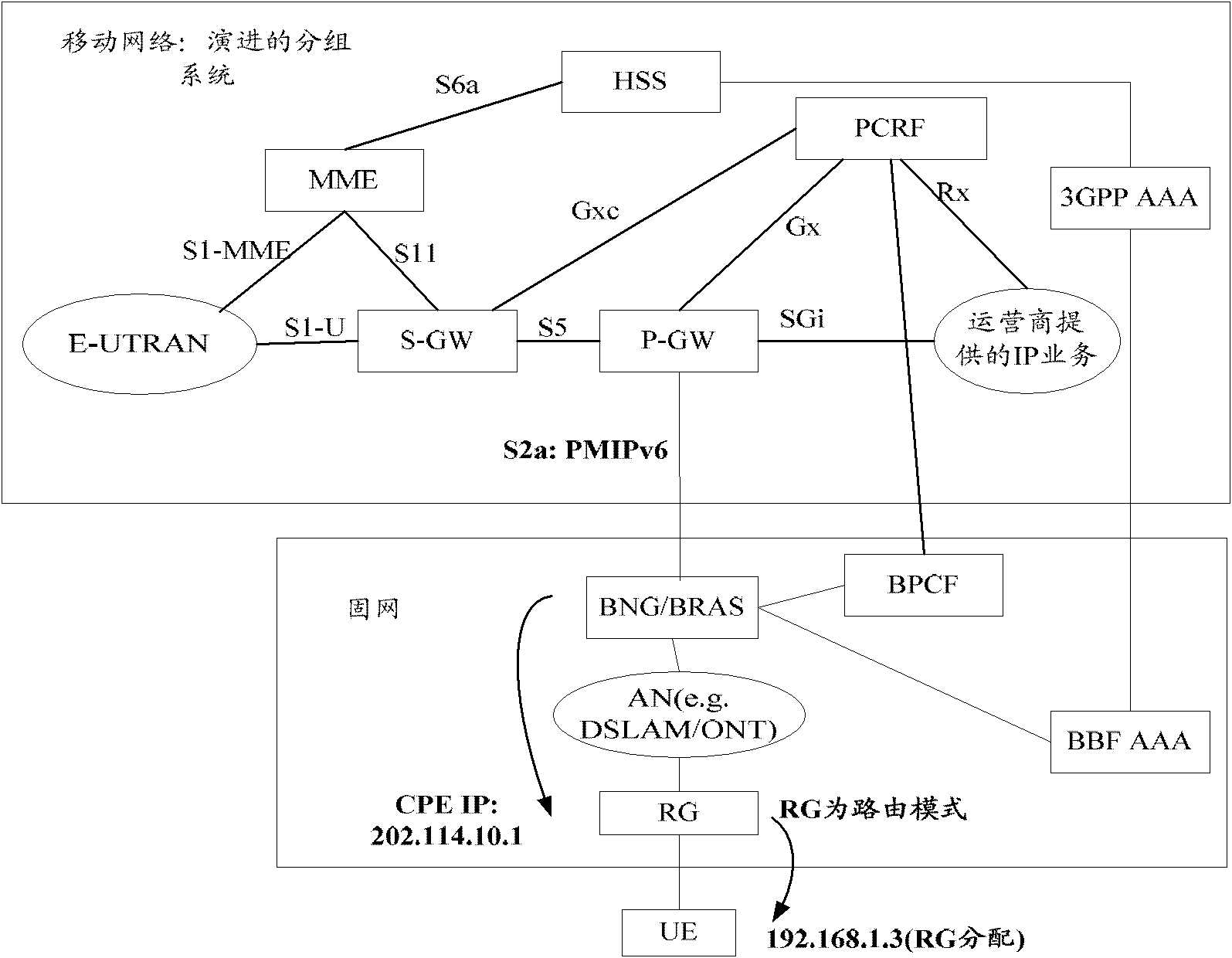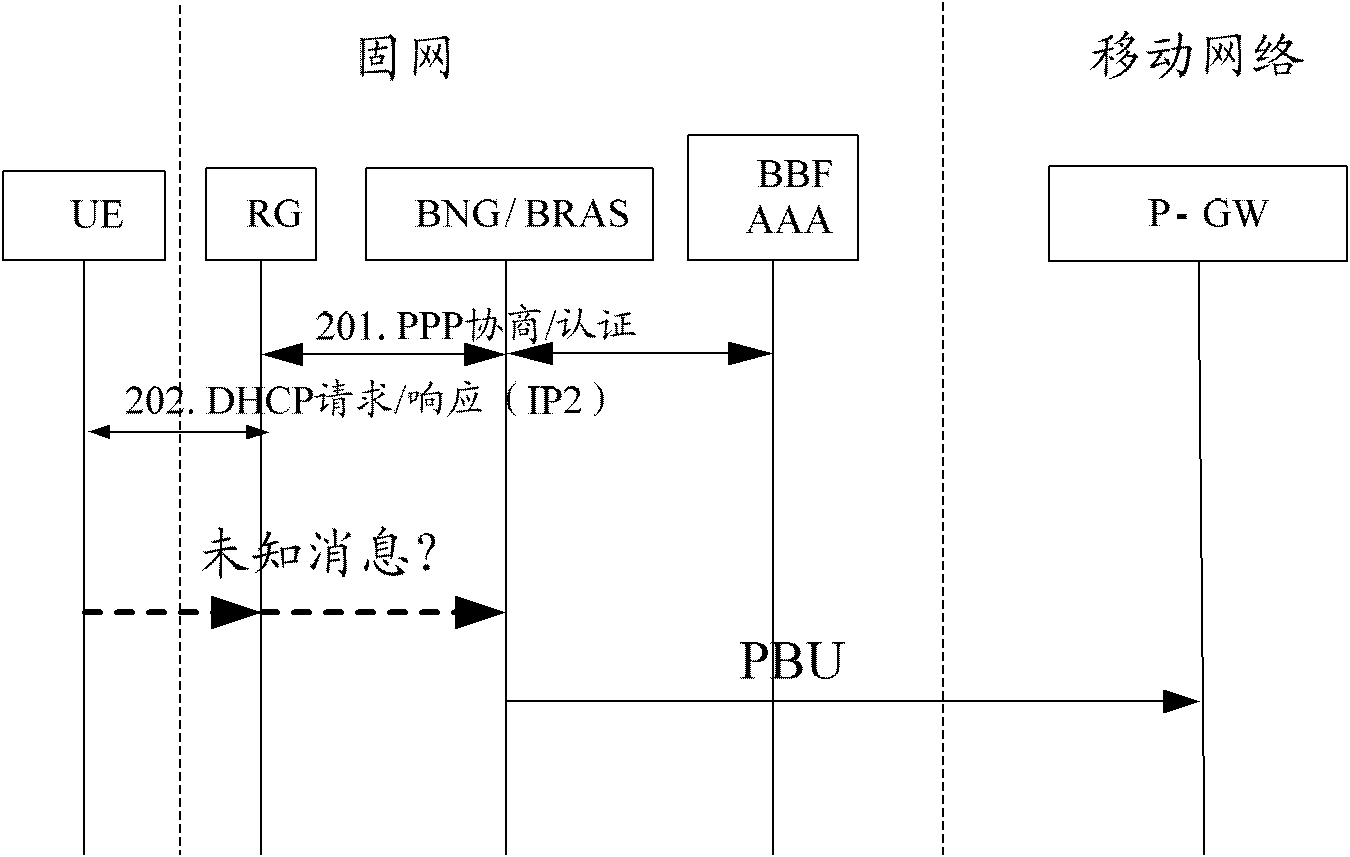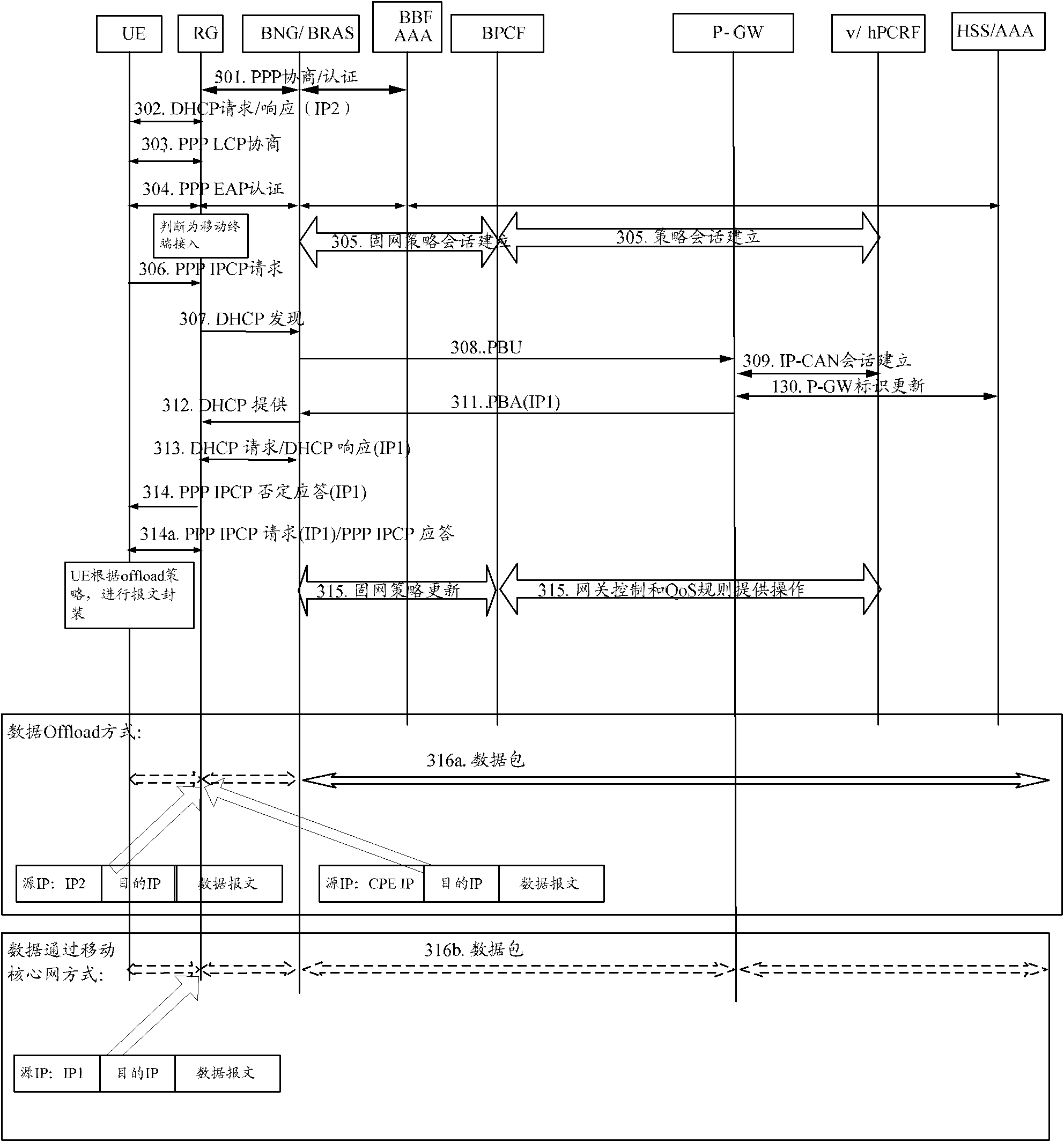Method and system for accessing to mobile core network through trusted fixed network
A mobile core and mobile network technology, applied in the field of mobile communications, can solve problems such as UE being unable to access mobile operator services, unable to trigger the core network to allocate IP addresses, etc.
- Summary
- Abstract
- Description
- Claims
- Application Information
AI Technical Summary
Problems solved by technology
Method used
Image
Examples
Embodiment 1
[0041] This process is when RG is in routing mode and WLAN is a trusted non-3GPP network. The mobile terminal UE accesses the mobile core network through the S2a interface. Wherein, the fixed network and the mobile network assign one IP address to the UE respectively, and store two IP addresses in the UE. The DHCP protocol is adopted between the RG and the BNG / BRAS to solve the problem that the IP address allocated by the mobile network to the terminal UE cannot be forwarded between the RG and the BNG / BRAS. Such as image 3 shown, including:
[0042] Step 301: A point-to-point protocol (Point to Point Protocol, PPP) negotiation and authentication process is performed between the RG and the BNG / BRAS. During the PPP negotiation process, the BNG / BRAS assigns a local IP address to the RG, that is, the CPE IP.
[0043] Step 302: A DHCP negotiation process is performed between the UE and the RG. During the DHCP negotiation process, the RG assigns an IP address to the UE, generall...
Embodiment 2
[0068] This process is when RG is in routing mode and WLAN is a trusted non-3GPP network. The mobile terminal UE accesses the mobile core network through the S2a interface. Wherein, the fixed network and the mobile network assign one IP address to the UE respectively, and store two IP addresses in the UE. The difference from Embodiment 1 is that the PMIP protocol is used between the RG and the BNG / BRAS to solve the problem that the IP address assigned by the mobile network to the terminal UE cannot be forwarded between the RG and the BNG / BRAS. Such as Figure 4 shown, including:
[0069] Step 401: The PPP negotiation and authentication process is carried out between the RG and the BNG / BRAS. During the PPP negotiation process, the BNG / BRAS assigns a local IP address to the RG, that is, the CPE IP.
[0070] Step 402: A DHCP negotiation process is performed between the UE and the RG. During the DHCP negotiation process, the RG assigns an IP address to the UE, generally a priva...
Embodiment 3
[0094] This process is similar to Embodiment 1, the main difference is that the address obtained by the UE is an IP address, for example: it is allocated by the mobile network or by the fixed network, such as Figure 5 shown, including:
[0095] Step 501: The PPP negotiation and authentication process is performed between the RG and the BNG / BRAS. During the PPP negotiation process, the BNG / BRAS assigns a local IP address, namely the CPE IP, to the RG.
[0096] Step 502: If the UE is a mobile terminal, perform PPP LCP negotiation with the RG.
[0097] Step 503: After receiving the PPP LCP request message from the UE, the RG, as the authenticator, will initiate a PPP EAP authentication request message to the UE; in the EAP authentication process, the RG can identify the UE as a mobile terminal user, and complete the authentication of the UE to the 3GPP server (For example: AAA Server) EAP authentication process.
[0098] Step 504: After BNG / BRAS receives the EAP authentication...
PUM
 Login to View More
Login to View More Abstract
Description
Claims
Application Information
 Login to View More
Login to View More - R&D
- Intellectual Property
- Life Sciences
- Materials
- Tech Scout
- Unparalleled Data Quality
- Higher Quality Content
- 60% Fewer Hallucinations
Browse by: Latest US Patents, China's latest patents, Technical Efficacy Thesaurus, Application Domain, Technology Topic, Popular Technical Reports.
© 2025 PatSnap. All rights reserved.Legal|Privacy policy|Modern Slavery Act Transparency Statement|Sitemap|About US| Contact US: help@patsnap.com



